Another School Shooting, The Legacy of Eric Harris : A Well Thought Out Scream by James Riordan
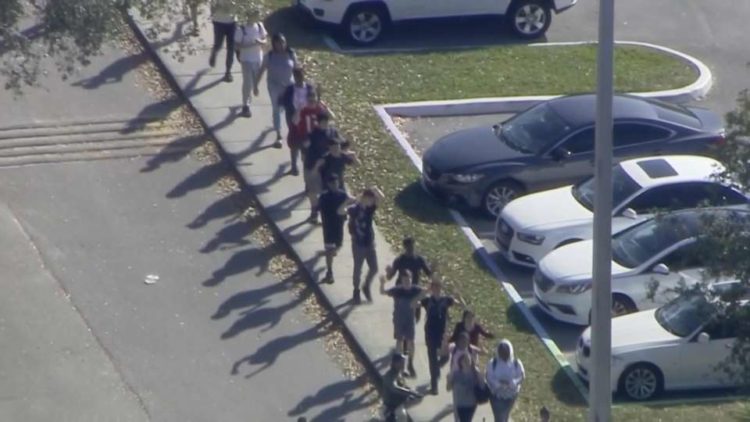
Eric Harris was one of the Columbine shooters commonly identified as the baby-faced, innocent looking one. After the killings many people made the mistake of thinking that the harder, tougher looking Dylan Klebold must have drawn sweet faced Harris into the murderous plot. We now know that it was the other way around. In fact, psychiatrists say Klebold would never have pulled off Columbine without Harris. He might have gotten caught for some petty crime, gotten help in the process, and conceivably could have gone on to live a normal life. Their view of Eric Harris is much different. Harris was not a wayward boy who could have been rescued. Harris, they believe, was irretrievable. He was a brilliant killer without a conscience, searching for the most diabolical scheme imaginable. If he had lived to adulthood and developed his murderous skills for many more years, there is no telling what he could have done. His death at Columbine may have stopped him from doing something even worse. Eric Harris wanted to bomb his high school out of a desire “to terrorize the entire nation by attacking a symbol of American life.” He was not a crazed loner striking out at jocks in 1999. Many people felt Klebold and Harris were striking back at the kids who picked on them. No one picked on Dylan Klebold because he was big and tough looking. No one picked on Eric Harris because they knew that something was terribly wrong with him. There was something very dark and very near the surface about him.
Eric Harris (left) and Dylan Klebold (right).
Just as the “falling trade towers” in New York City came to symbolize the 9/11 attacks, Columbine enshrined fear for children at school. No other shooting of students by students would receive the same extent of news coverage. Most important, however, Columbine came to be associated with virtually every act of gun violence that would occur on school grounds throughout the United States and, in many cases, throughout the world. One author referred to he “Columbine Syndrome” after a vicious shooting at Virginia Tech in 2007, in which the assailant utilized mass media and popular culture imagery in his screed, while also sending media materials to several outlets. This article addresses the relevance of the mass media for Columbine and a national preoccupation with fear. Eric Harris wrote that he hoped he would take away the sense of safety parents felt when they sent their kids off to school. He did.
Harris and Klebold laughed at petty school shooters. They bragged about dwarfing the carnage of the Oklahoma City bombing and originally scheduled their bloody performance for its anniversary. Klebold boasted on video about inflicting “the most deaths in U.S. history.” Columbine was intended not primarily as a shooting at all, but as a bombing on a massive scale. If they hadn’t been so bad at wiring the timers, the propane bombs they set in the cafeteria would have wiped out 600 people. After those bombs went off, they planned to gun down fleeing survivors. An explosive third act would follow, when their cars, packed with still more bombs, would rip through still more crowds, presumably of survivors, rescue workers, and reporters. The climax would be captured on live television. It wasn’t just “fame” they were after — they were gunning for devastating infamy on the historical scale of an Attila the Hun. Their vision was to create a nightmare so devastating and apocalyptic that the entire world would shudder at their power.
 This week there was a terrible school shooting at Marjory Stoneman Douglas High School in Parkland, Florida which left seventeen dead. Due to the method that a website uses to classify what constitutes a school shooting it was erroneously reported that there had been 18 school shootings since January 1st, 2018. This figure is incorrect. The correct number is
This week there was a terrible school shooting at Marjory Stoneman Douglas High School in Parkland, Florida which left seventeen dead. Due to the method that a website uses to classify what constitutes a school shooting it was erroneously reported that there had been 18 school shootings since January 1st, 2018. This figure is incorrect. The correct number is
© Mark Wilson/Getty Images.People participate in a prayer vigil for famlies of Marjory Stoneman Douglas High School.
eleven. For the first time I’m glad that wrong information has swept the country. In the last few days people have buzzing with the phrase “18 school shootings since January 1, 2018”. Most of the time they are shaking their heads in amazement, stunned by the statistics of the rising mass murder incidents in our schools. The stunning number swept across the Internet within minutes of the news Wednesday that, yet again, another young man with another semiautomatic rifle had rampaged through a school, this time at Marjory Stoneman Douglas High in South Florida. The figure originated with Everytown for Gun Safety, a nonprofit group, co-founded by Michael Bloomberg, that works to prevent gun violence and is most famous for its running tally of school shootings. “This,” the organization tweeted at 4:22 p.m. Wednesday, “is the 18th school shooting in the U.S. in 2018.”
Our hearts are with all those impacted by the shooting at today. This is the 18th school shooting in the U.S. in 2018. https://t.co/YdPLz4zuOS — Everytown (@Everytown) February 14, 2018. A tweet by Sen. Bernie Sanders (I-Vt.) including the claim had been liked more than 45,000 times by Thursday evening, and one from political analyst Jeff Greenfield had cracked 126,000. New York City Mayor Bill de Blasio tweeted it, too, as did performers Cher and Alexander William and actors Misha Collins and Albert Brooks. Maybe, just maybe, after 18 school shootings in America in just 43 days of 2018 the Congress might want to consider common-sense gun safety legislation and save innocent lives. — Bernie Sanders (@SenSanders) February 14, 2018 News organizations — including MSNBC, ABC News, NBC News, CBS News, Time, MSN, the BBC, the New York Daily News and HuffPost — also used the number in their coverage. By Wednesday night, the top suggested search after typing “18” into Google was “18 school shootings in 2018.”
It is a horrifying statistic. But it is wrong. Everytown statistics included incidents of gunfire that are not really school shootings. Take, for example, what it counted as the year’s first: On the afternoon of Jan. 3, a 31-year-old man who had parked outside a Michigan elementary school called police to say he was armed and suicidal. Several hours later, he killed himself. The school, however, had been closed for seven months. There were no teachers. There were no students. Also listed was an incident from Jan. 20, when at 1 a.m. a man was shot at a sorority event on the campus of Wake Forest University. A week later, as a basketball game was being played at a Michigan high school, someone fired several rounds from a gun in the parking lot. No one was injured, and it was past 8 p.m., well after classes had ended for the day, but Everytown still labeled it a school shooting.
© Amy Beth Bennett/Sun Sentinel/TNS/Getty Images Waiting for word from students at Coral Springs Drive and the Sawgrass Expressway just south of the campus of Stoneman Douglas High School in Parkland, Fla., after a shooting on Wednesday, Feb. 14, 2018. (Amy Beth Bennett/Sun Sentinel/TNS via Getty Images)
Everytown explains on its website that it defines a school shooting as “any time a firearm discharges a live round inside a school building or on a school campus or grounds.” Sarah Tofte, Everytown’s research director, calls the definition “crystal clear,” noting that “every time a gun is discharged on school grounds it shatters the sense of safety” for students, parents and the community. She said she and her colleagues work to reiterate those parameters in their public messaging. But the organization’s tweets and Facebook posts seldom include that nuance. Just once in 2018, on Feb. 2, has the organization clearly explained its definition on Twitter. And Everytown rarely pushes its jarring totals on social media immediately after the more questionable shootings, as it does with those that are high-profile and undeniable, such as the Florida massacre or one from last month in Kentucky that left two students dead and at least 18 people injured.
A young woman who just walked out from the direction of the high school, who refused to give her name, gets a hug as she reaches the overpass at Coral Springs Drive and the Sawgrass Expressway just south of the campus of Marjory Stoneman Douglas High School where a shooting occurred on Wednesday, Feb. 14, 2018 in Parkland, Fla. (Amy Beth Bennett/Sun Sentinel/TNS via Getty Images
After The Washington Post published this report, Everytown removed the Jan. 3 suicide outside the closed Michigan school. These figures are important for a lot of reasons. Gun-control activists use them as evidence in their fight for bans on assault weapons, stricter background checks and other legislation. Gun rights groups seize on the faults in the data to undermine those arguments and, similarly, present skewed figures of their own.
Gun violence is a crisis in the United States, especially for children, and a huge number — one that needs no exaggeration — have been affected by school shootings. An ongoing Washington Post analysis has found that more than 150,000 students attending at least 170 primary or secondary schools have experienced a shooting on campus since the Columbine High School massacre in 1999. That figure, which comes from a review of online archives, state and federal enrollment figures and news stories, is a conservative calculation and does not include dozens of suicides, accidents and after-school assaults that have also exposed youths to gunfire.
Students are released from a lockdown outside of Stoneman Douglas High School in Parkland, Fla., after a shooting on Wednesday, Feb. 14, 2018. (John McCall/Sun Sentinel/TNS via Getty Images)
Five of Everytown’s 18 school shootings listed for 2018 happened during school hours and resulted in any physical injury. Three others appeared to be intentional shootings but did not hurt anyone. Two more involved guns — one carried by a school police officer and the other by a licensed peace officer who ran a college club — that were unintentionally fired and, again, led to no injuries. At least seven of Everytown’s 18 shootings took place outside normal school hours.
Shootings of any kind, of course, can be traumatic, regardless of whether they cause physical harm. A month ago, for example, a group of college students were at a meeting of a criminal-justice club in Texas when a student accidentally fired a real gun, rather than a training weapon. The bullet went through a wall, then a window. Though no one was hurt, it left the student distraught.
Is that a school shooting, though? Yes, Everytown says. “Since 2013,” the organization says on its website, “there have been nearly 300 school shootings in America — an average of about one a week.”
But since Everytown began its tracking, it has included these examples — in August 2013, a man shot on a Tennessee high school’s property at 2 a.m.; in December 2014, a man shot in his car late one night and discovered the next day in a Pennsylvania elementary school’s parking lot; in August 2015, a man who climbed atop the roof of an empty Texas school on a Sunday morning and fired sporadically; in January 2016, a man in an Indiana high school parking lot whose gun accidentally went off in his glove box, before any students had arrived on campus; in December 2017, two teens in Washington state who shot up a high school just before midnight on New Year’s Eve, when the building was otherwise empty.
In 2015, The Post’s Fact Checker awarded the group’s figures — invoked by Sen. Chris Murphy (D-Conn.) — four Pinocchios for misleading methodology.
Another database, the Gun Violence Archive, defines school shootings in much narrower terms, considering only those that take place during school hours or extracurricular activities.
Yet many journalists rely on Everytown’s data. Post media critic Erik Wemple included the 18 figure in a column Wednesday night, and Michael Barbaro, host of the New York Times’ podcast “The Daily,” used the number to punctuate the end of his Thursday show.
Much like trying to define a mass shooting, deciding what is and is not a school shooting can be difficult. Some obviously fit the common-sense definition: Last month, a teen in Texas opened fire in a school cafeteria, injuring a 15-year-old girl. Others that Everytown includes on its list, though, are trickier to categorize.
About 6 p.m. Jan. 10, a bullet probably fired from off campus hit the window of a building at a college in Southern California. No one was hurt, but students could still have been frightened. Classes were canceled, rooms were locked down and police searched campus for the gunman, who was never found.
On Feb. 5, a police officer was sitting on a bench in a Minnesota school gym when a third-grader accidentally pulled the trigger of his holstered pistol, firing a round into the floor. None of the four students in the gym were injured, but, again, the incident was probably scary.
There is no need to exaggerate the numbers because the real stats are horrifying as well. There is no question that Columbine forever changed the way people felt about school safety. In many ways the madness that occurs in so many schools today is the legacy of Eric Harris. There were school shootings before Columbine, but not to that degree of murderous intent. Not students using automatic weapons to kill other students. No matter what the specific stats there is no doubt that gun violence’s has a devastating impact on children. A recent study of World Health Organization data published in the American Journal of Medicine that found that, among high-income nations, 91 percent of children younger than 15 who were killed by bullets lived in the United States. And the trends are only growing more dire. On average, two dozen children are shot every day in the United States, and in 2016 more youths were killed by gunfire — 1,637 — than during any previous year this millennium.
Since Columbine the numbers, as follows, are staggering:
50 – The number of mass murders or attempted mass murders at a school since Columbine. (FBI records)
141 – The number of people killed in a mass murder or attempted mass murder at a school since Columbine. (FBI records)
73 – The percentage of school shooters with no prior criminal record, not even an arrest. (U.S. Secret Service, U.S. Department of Education)
96 – The percentage of school shooters who are male. (FBI records)
17 – The number of kids aged 15 or younger who have committed or attempted a mass school shooting since Columbine. (FBI records)
81 – The percentage of school shootings where someone had information that the attacker was thinking about or planning the shooting. (U.S. Secret Service, U.S. Department of Education)
68 – The percentage of school shooters who got their guns from relatives or at home. (US Secret Service, US Department of Education)
65 – The number of school shooters and thwarted school shooters who have referenced Columbine as a motivation. (ABC News investigation, various law enforcement agencies)
270 – The number of shootings of any kind at a school since Columbine. (ABC News review of reported cases)
1 – The number of shootings per week, on average, on a school or college campus in 2015. (ABC News review of reported cases)
Those of us who believe in true evil know that it had a heavy hand in Columbine and its wake of tragedy. I believe Eric Harris broke through some kind of barrier. Maybe it was just the idea that something as horrible as students securing and firing automatic weapons on their own classmates could actually be reality. Maybe it was something even darker. All I know is its about time we accepted that the beast has been unleashed and it’s not going away until we figure out a way to stop it.


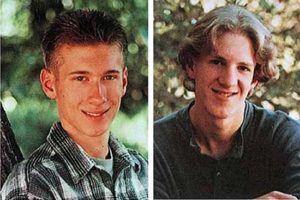




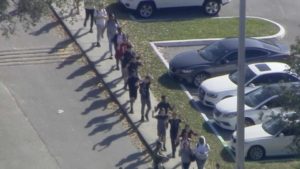

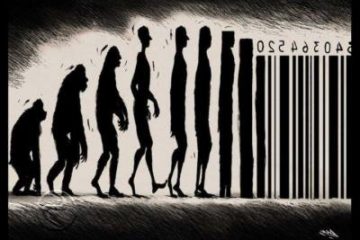

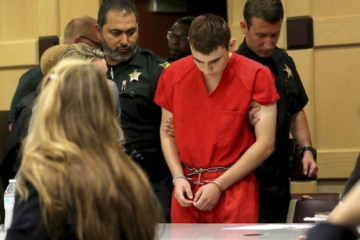

No Comment